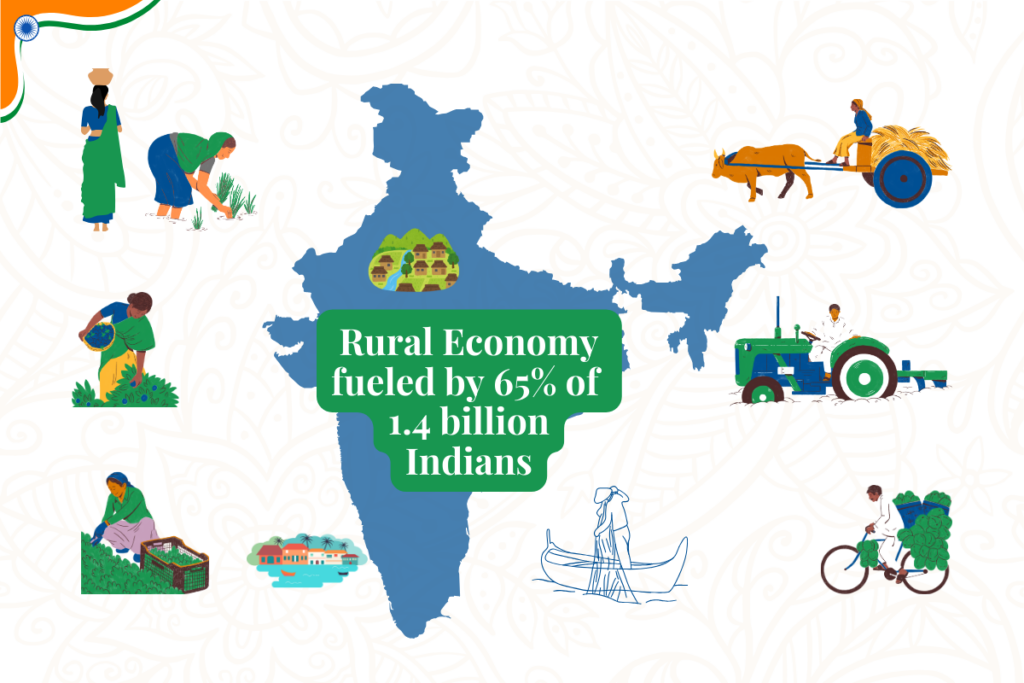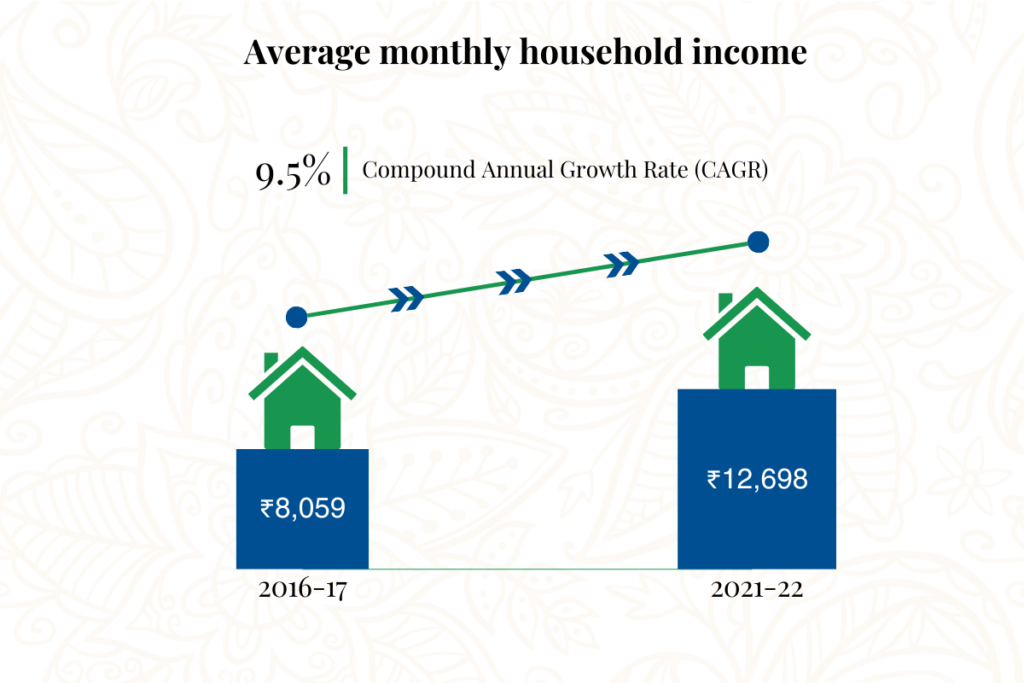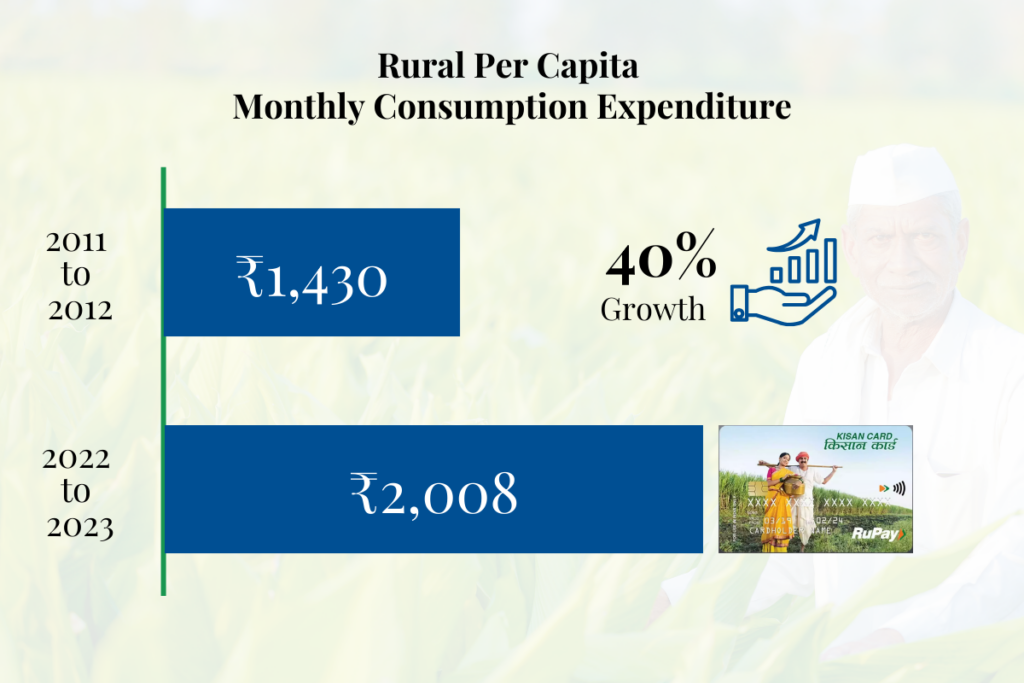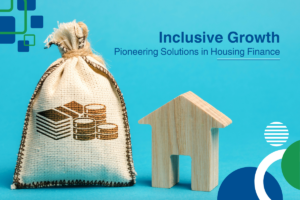Author: Ananya Raju
In the bustling weekly haat of Baramati, Maharashtra, 35-year-old Kamla, a vegetable seller, exemplifies the shift towards digital payments in rural India. Just a few years ago, her transactions relied heavily on cash, often limited by the availability of small notes and coins. Today, with a simple tap on her smartphone using UPI, she can accept payments seamlessly. This transformation not only streamlines her sales but also enhances customer satisfaction by eliminating the need for change. Kamla’s experience mirrors a broader trend of financial inclusion and empowerment sweeping across rural areas, bridging the gap between Bharat and its future.
The Growth of India’s Rural Economy
India’s rural economy, which encompasses 65% of the nation’s population, is undergoing significant changes beyond traditional agriculture. As per RBI, recent data from Q2 FY25 indicates that rural demand has shown remarkable resilience with a 6% year-over-year growth, outpacing urban markets at 2%. This growth is attributed to favourable monsoon conditions and increased government expenditure, marking the third consecutive quarter where rural markets have surpassed urban counterparts across various sectors.

Rising Incomes and Savings
The NABARD All India Financial Inclusion Survey (NAFIS), released in October 2024, reveals critical insights into rural economic trends. Between 2016-17 and 2021-22, average monthly household incomes surged from ₹8,059 in 2016-17 to ₹12,698, reflecting a compound annual growth rate (CAGR) of 9.5%. This income growth has empowered households to save more, with the percentage of families reporting regular savings increasing from 50.6% to 65.6% during this period.

Source: NABARD All India Financial Inclusion Survey
Enhanced Financial Access
Financial inclusion has made significant strides in rural India. The share of agricultural households accessing loans from institutional sources rose from 60.5% in 2016-17 to 75.5% in 2021-22, supported by initiatives like the Kisan Credit Card program. Insurance penetration has also improved significantly; households with at least one insured member increased from 25.5% to 80.3% over the same period.

Source: Household Consumption Expenditure Survey
Changing Consumption Patterns
The evolution of rural consumption is evident in the Household Consumption Expenditure Survey. Adjusted for inflation, rural per capita monthly consumption expenditure increased by over 40%, rising from ₹1,430 in 2011-12 to ₹2,008 in 2022-23. Notably, non-food expenditures – especially on conveyance and durable goods—are driving this growth. For instance, tractor sales saw a year-over-year increase of 22.37% in October 2024, while two-wheeler sales rose by 14%, with rural sales constituting approximately 50% of total sales.
The Road Ahead for Rural India
The ongoing transformation in rural India is driven by factors such as enhanced digital connectivity and infrastructure improvements. The Government of India plans to allocate around 60% of its unspent budget funds to the rural economy in H2 FY25, positioning rural demand as a central driver of India’s economic trajectory.
This narrative reflects resilience and optimism while presenting substantial opportunities for investors and market watchers alike. As rural prosperity continues to rise, it plays an integral role in India’s journey toward achieving a quadrillion-dollar GDP.
Join the Movement Towards Rural Empowerment
The digital transformation in rural India is not just about technology; it’s about empowering individuals like Kamla and creating sustainable economic growth for communities across the nation. Stay informed about these developments and consider how you can contribute to or benefit from this evolving landscape.
Explore ways to support local businesses or invest in initiatives that promote financial inclusion and sustainability in rural areas today.
Author: Ananya Raju | TVS Capital Funds

Other articles you may be interested in:

